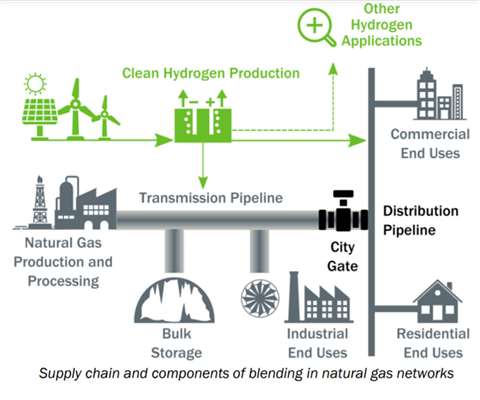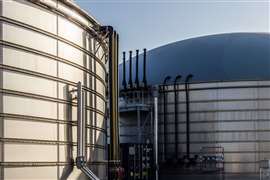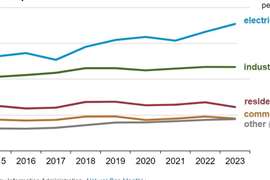DOE study to assess hydrogen compatibility with U.S. pipelines
07 January 2022
 The National Renewable Energy Laboratory will coordinate the HyBlend Project to assess hydrogen compatibility with pipeline materials and operations.
The National Renewable Energy Laboratory will coordinate the HyBlend Project to assess hydrogen compatibility with pipeline materials and operations.
A division of the U.S. Department of Energy has launched a two-year study to assess the possibility of blending hydrogen into the U.S. natural gas network and the effects of hydrogen on midstream assets.
The National Renewable Energy Laboratory, along with participation from Sandia National Laboratories, Pacific Northwest National Laboratory, Argonne National Laboratory, Oak Ridge National Laboratory, and the National Energy Technology Laboratory, will coordinate the HyBlend Project to assess hydrogen compatibility with pipeline materials and operations.
The Gas Technology Institute will serve as an industry liaison and play a key role in technical reviews. The collaboration will perform life-cycle analysis for carbon emissions reductions and a techno-economic analysis to assess solutions for grid-scale hydrogen energy storage and transport. The results of this initiative will facilitate the development of publicly accessible tools that characterize the opportunities, costs, and risks of blending hydrogen in the natural gas pipeline network.
More than 30 stakeholders from industry, nonprofits, and academia are supporting this government-private industry effort sponsored by DOE’s Hydrogen and Fuel Cell Technologies Office in the Office of Energy Efficiency and Renewable Energy. GTI is leading energy industry participation and bringing direct funding and in-kind cost share to add to $10 million in funding provided by the government.
Operations Technology Development (OTD) and Utilization Technology Development (UTD), two global non-profits of natural gas utilities supporting research, are providing financial support, the GTI reported.
Additional companies that have joined GTI to support the HyBlend project include Boardwalk Pipelines; ConocoPhillips Company; Equitrans Midstream; Mears Group, Inc., a Quanta Services company; PSE&G; Xcel Energy; ONEOK Inc.; Exelon Corp.; and GRT Gaz Research and Innovation Center for Energy (RICE), a European-based organization.
U.S. natural gas utilities have announced at least 26 hydrogen pilot projects over the last 12 months as the industry how to transport gas, according to a recent report from S&P Global Platts. The utility company Sempra has 12 projects, more than any other U.S. utility.
One of the goals of the HyBlend Project is to determine how much hydrogen a gas line can use before customers notice a difference in flame quality and heat content value.
The DOE noted that the U.S. has an extensive network of about three million million miles of natural gas pipelines and more than 1600 miles of pipelines dedicated exclusively to hydrogen. “Hydrogen produced through clean pathways can be injected into natural gas pipelines, and the resulting blends can be used to generate heat and power with lower emissions than using natural gas alone,” according to the Office of Energy Efficiency & Renewable Energy.
Blend limits can vary widely depending on multiple variables and have ranged from less than 1% to 30% in recent demonstrations. Natural gas transmission pipeliens are usually made of steel, but prior to 1950, they were built of cast iron. Lower pressure distribution piping is often made of plastic, according to the Pipeline and Hazardous Materials Safety Administration.
The HyBlend Project researchers will test pipeline materials in varying concentrations of hydrogen at pressures up to 100 bar to assess their ability to transport hydrogen, the DOE reported.





